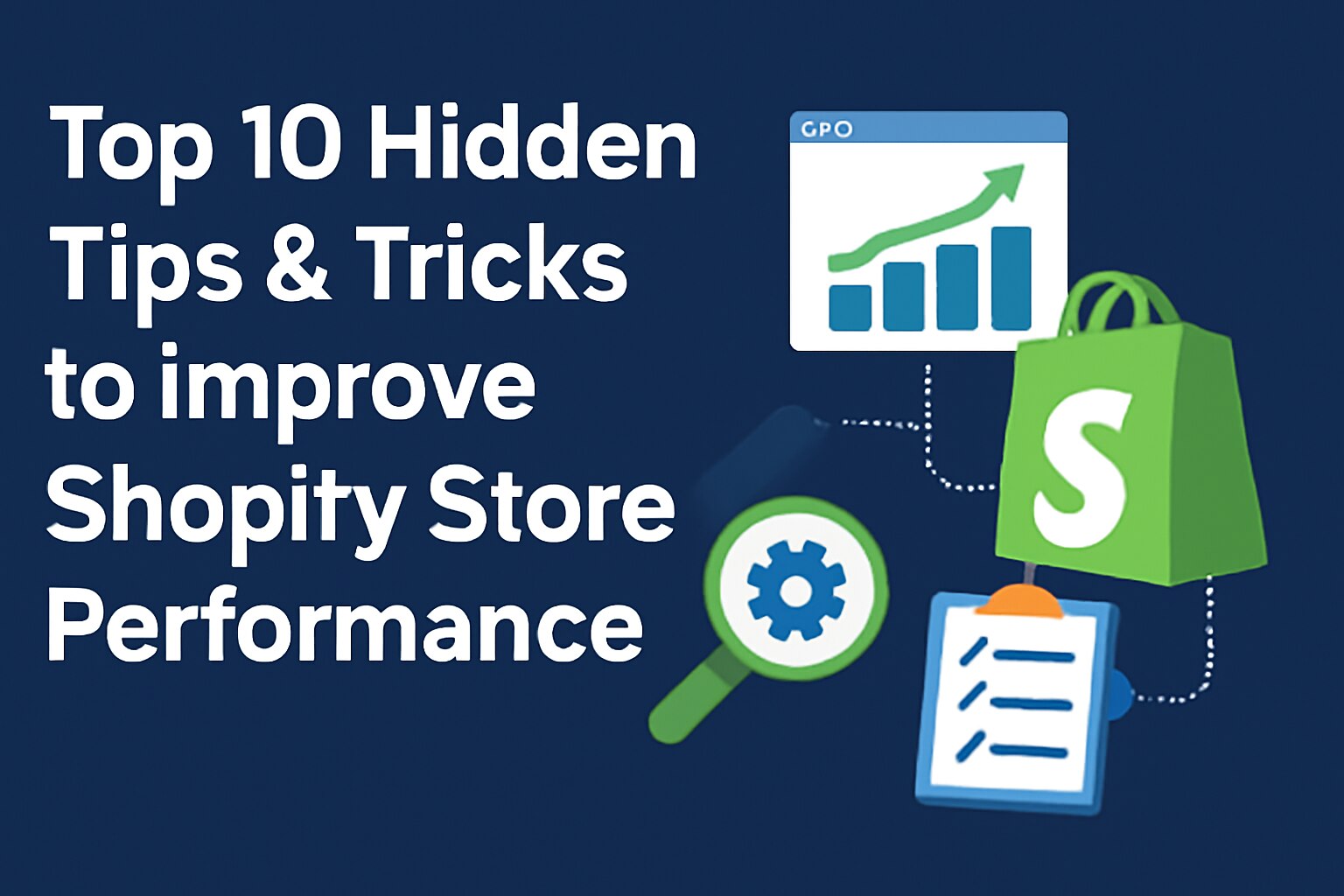
Top 10 Hidden Tips & Tricks to Improve Shopify Store Performance
Shopify is used by many sellers to grow
online sales. However, store performance is often ignored by new owners. If a
store is slow, many buyers will leave quickly. Sales will be lost and bounce
rates will go high.
A fast store gives a better experience to
all users. Search rankings are also improved by better store performance.
Hidden tricks can be used to make the store faster. Small changes are often
enough to create a big impact.
Follow these tips shared by the best website designing
company in India that are going to be helpful for both new and
old stores.
By using them, more traffic and sales can
be achieved.
Unused Apps Should Be Removed from the Store
Many Shopify apps are often installed but
not always used. These unused apps should be deleted from the store. Store
speed is reduced by extra and idle apps. More code is added when apps are kept
installed.
Site loading time is affected by this
hidden code. A faster store can be achieved by removing them. Better
performance is enjoyed by customers after app cleanup. Sales can be lost when a
store loads slowly.
Store management becomes easier with fewer
apps installed. A regular check for unused apps should be done monthly. Only
important apps must be kept for smooth performance.
Large Image Files Must Be Compressed Before Uploading
High-quality images are often uploaded
without being resized first. Store speed is reduced by large and heavy image
files. More data is loaded when big images are used. This causes slower pages
and poor user experience overall.
Image compression tools should be used
before uploading files. Page load speed is improved by smaller image sizes.
Better performance is seen when images are properly optimized.
Conversion rates can drop if the site loads
slowly. Storage space is also saved by using compressed images. Every image
must be checked and resized before uploading it. A faster and smoother store
will be noticed instantly.
A Fast and Responsive Theme Should Be Selected
The store’s speed is greatly affected by
the theme. Heavy themes are often used with many extra features. Site loading
time is increased by those extra design elements. A lightweight theme should be
chosen for better performance.
Fewer files are loaded when a clean theme
is used. Mobile experience is improved with a responsive and fast theme. More
visitors stay when pages open quickly and smoothly. Store design should be
simple, clean, and easy to use.
Complex themes must be avoided for faster
loading speed. A faster theme helps improve both SEO and user satisfaction.
Theme quality must be tested before being installed.
Fonts and Animations Must Be Used in Moderation
Store speed can be reduced by fancy fonts
and animations. Extra code is added when many styles are included. Page load
time is increased by custom font files. Too many animations can distract users
from main content.
Simple and standard fonts should be used
for clarity. Better speed is achieved by reducing unnecessary design effects. A
clean look is created with limited visual styles. User experience is improved
when content loads fast and smooth.
Store performance should be tested after
adding new styles. Only essential visual elements must be kept on the site.
Speed and simplicity must always be given priority.
Lazy Loading Should Be Enabled for Product Images
Lazy loading is a technique that improves
page speed. Only visible images are loaded when the page is opened. Images
below the fold are not loaded immediately. This reduces the number of requests
made to the server.
The page is shown faster to users as a
result. Site performance is improved as the images load when needed. Less data
is consumed by users when lazy loading is used. Product images appear as
customers scroll down the page.
Faster load times can lead to higher
conversion rates. Lazy loading should be enabled for all product pages. This
simple technique helps keep the store quick and efficient.
Third-Party Scripts Should Be Reduced or Delayed
Third-party scripts, like chatbots or
analytics, can slow down the store. Extra code is added by these external
scripts. This affects the store’s speed and overall performance. Scripts should
be reduced to only the essential ones.
Non-essential scripts can be delayed to
load later. Site loading time is improved by controlling when scripts are
loaded. Important elements are prioritized, ensuring fast page display.
Unnecessary scripts must be avoided for a
smoother experience. Performance can be monitored regularly to ensure scripts
do not harm speed. Optimizing third-party scripts helps create a faster and
better user experience.
Store Pages Must Be Kept Simple and Clean
A cluttered store page can confuse visitors
and slow down the site. Too many elements on a page can increase load time. A
simple and clean layout should be used for better performance. Unnecessary
text, images, or widgets must be removed. Clear navigation is provided when the
layout is simple.
User experience is enhanced with a
straightforward design. Faster page loads lead to more satisfied visitors.
Fewer elements mean that the store is easier to manage. A minimalist design can
also help with conversions.
Store performance improves when the focus
is on essential content only. A clean page always attracts more buyers.
CDN (Content Delivery Network) Should Be Used for Assets
A Content Delivery Network (CDN) speeds up
the loading process. Assets like images, CSS files, and JavaScript are cached
on multiple servers. These servers are located worldwide to deliver content
quickly.
By using a CDN, content is served from the
nearest server. This reduces the distance and time taken to load the files.
Faster load times are experienced by customers, especially from different
regions.
The overall performance of the store
improves when a CDN is used. Website downtime is reduced because of CDN's
reliability. Faster page speeds can help with SEO rankings and user
satisfaction. Every Shopify store should take advantage of CDN for better performance.
Broken Links and 404 Errors Must Be Fixed Quickly
Broken links and 404 errors can harm the
store’s reputation. These errors prevent users from accessing certain pages.
Customers may leave if they find many broken links. Search engines also
penalize sites with too many errors.
Regular checks should be done to identify
and fix these issues. Tools like Google Search Console can help spot broken
links. Pages with errors should be redirected to relevant content. User
experience is greatly improved when all links work properly.
Store performance is negatively affected by
broken links over time. Timely fixes ensure that the site remains functional
and user-friendly.
Performance Should Be Tested Regularly Using Free Tools
Regular performance testing is essential
for maintaining a fast store. Free tools like GTmetrix and Google PageSpeed can
be used to check speed. These tools provide valuable insights into what is
slowing down the site.
Issues such as large images or unnecessary
scripts can be identified. Testing helps find areas that need improvement to
boost performance.
Store owners should run tests at least once
a month. Recommendations from these tools should be followed to improve speed.
Performance testing allows for continuous optimization of the store. Regular
checks ensure the site stays fast and efficient for users.
Who We Are?
We are a leading Shopify web development company in Delhi known for creating hassle-free solutions for our online customers.
Also check this - Top 10 Shopify Website Development Companies in Delhi






